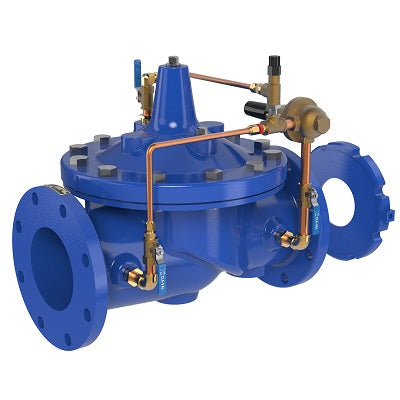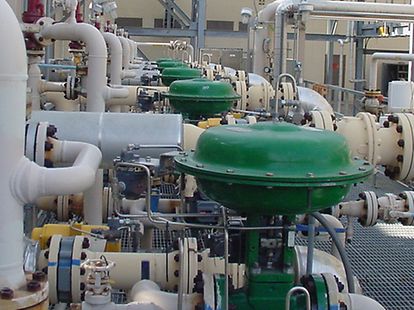Innovative Control Valves: Enhancing Accuracy and Dependability
Wiki Article

Maximize Energy Financial Savings and Convenience With Advanced Structure Automation Controls
In the world of modern style and facility management, the assimilation of innovative structure automation controls stands as a critical improvement. The convergence of innovation and sustainability has birthed a new era where power efficiency, comfort optimization, and functional streamlining are no more obtainable truths but far-off goals. By taking advantage of the power of automation, structures can adjust, respond, and progress in manner ins which were once unthinkable. The potential for substantial power cost savings and improved comfort is not just a possibility but a guarantee waiting to be satisfied. This paradigm change in building management holds the vital to unlocking a world where ecological conscientiousness and owner well-being harmoniously exist side-by-side within the walls of our structures.Energy Performance Benefits
Power efficiency benefits can dramatically decrease power intake and operational costs in buildings. By executing energy-efficient methods and modern technologies, building owners and drivers can attain significant financial savings while also adding to environmental sustainability. Among the key advantages of enhancing energy effectiveness in structures is the decrease of energy bills. Energy-efficient systems, such as innovative structure automation controls, can maximize making use of sources like home heating, lights, and air conditioning, causing reduced power costs gradually.In addition, improved power performance can lengthen the lifespan of building equipment and systems. By running much more efficiently, cooling and heating systems, light, and various other building parts experience much less wear and tear, leading to minimized upkeep and replacement prices. In addition, energy-efficient buildings often regulate greater property worths and rental rates, providing long-lasting financial benefits to proprietors.
In addition, power effectiveness can boost passenger comfort and productivity. Appropriately controlled indoor settings with ideal illumination and thermal conditions develop an even more conducive and positive work space, bring about improved worker satisfaction and performance. Generally, the power efficiency benefits linked with sophisticated structure automation controls are multifaceted, encompassing cost savings, environmental stewardship, and owner well-being.
Boosted Convenience Control
Enhancing comfort control in building atmospheres requires an innovative combination of advanced automation systems for optimum resident wellness. By using sophisticated structure automation controls, facilities can customize the interior atmosphere to fulfill the certain demands and preferences of residents. These systems enable exact regulation of temperature, air flow, and lights, developing a comfortable and productive environment. Passenger complete satisfaction and performance are carefully connected to thermal comfort, making it necessary to have systems in position that can adjust to changing conditions in real-time.Boosted comfort control exceeds basic temperature changes. It includes functions such as personalized setups, occupancy sensors, and natural light usage to create a responsive and vibrant environment. By incorporating these innovative controls, structures can not only improve convenience but also boost power performance by maximizing system procedures based on actual occupancy and use patterns. Eventually, prioritizing passenger convenience with innovative automation systems causes a more satisfying and much healthier indoor environment.
Functional Performance Improvements

Additionally, the execution of real-time tracking and analytics tools allows building operators to identify power inefficiencies and operational abnormalities without delay. By continuously keeping track of power usage patterns and system performance metrics, changes can be made in real-time to enhance power intake and make sure peak functional effectiveness. control valves. Additionally, including need reaction techniques into structure automation controls can additionally improve operational performance by dynamically readjusting power use based upon grid problems and rates signals
Indoor Climate Optimization
Effective indoor climate optimization is a basic facet of building automation controls, guaranteeing passengers' comfort and health while optimizing energy financial savings. By using innovative sensors and controls, constructing automation systems can continually adjust and monitor temperature level, humidity degrees, air top quality, and air flow to produce an ideal indoor environment. Keeping comfy and constant problems not just enhances resident satisfaction however also increases efficiency and overall well-being.Indoor climate optimization also plays a critical duty in power efficiency. By fine-tuning heating, air flow, and cooling systems based upon real-time data and occupancy patterns, building automation controls can substantially minimize energy usage - control valves. Executing techniques such as demand-controlled ventilation and thermal zoning can help decrease energy waste while ensuring that each location of the structure obtains the needed conditioning.

Sustainable Environment Development
Structure automation manages not just optimize interior environment conditions for energy performance and occupant comfort however likewise lay the structure for creating a lasting environment via tactical monitoring of systems and sources. By incorporating innovative building automation modern technologies, such as sensing units, actuators, and intelligent software application, facilities can readjust and keep an eye on energy usage in real-time to reduce waste and minimize their carbon footprint. These systems make it possible for predictive maintenance, identifying web possible concerns before they rise and optimizing devices performance to enhance longevity and efficiency.In addition, lasting setting development extends past power management to encompass water conservation, waste reduction, and indoor air quality improvement. Building automation controls can manage water usage, find leaks, and guarantee appropriate waste disposal methods, adding to total sustainability efforts. In addition, by monitoring and regulating air flow and purification systems, these technologies enhance resident health and wellness and performance while lowering energy consumption linked with a/c procedures.
Verdict
In verdict, progressed structure automation controls deal substantial advantages in terms of power cost savings, comfort control, functional effectiveness, interior climate optimization, and creating a sustainable atmosphere. By executing these controls, structures can achieve ideal performance while lowering power consumption and boosting occupant comfort. It appears that using advanced automation technology is important in improving building performance and producing a much more lasting future.Power performance advantages page can substantially lower power usage and functional prices in structures. Generally, the power efficiency benefits connected with innovative building automation controls are multifaceted, encompassing price financial savings, environmental stewardship, and owner health.
Additionally, including demand reaction methods into structure automation controls can better improve functional efficiency by dynamically changing energy use based on grid problems and rates signals.
Structure automation regulates not only optimize interior environment problems for power effectiveness and occupant comfort however also lay the structure for developing a sustainable setting via calculated management of systems and resources.In conclusion, progressed building automation manages offer significant benefits in terms of power savings, convenience control, functional effectiveness, indoor climate optimization, and producing a sustainable environment.
Report this wiki page